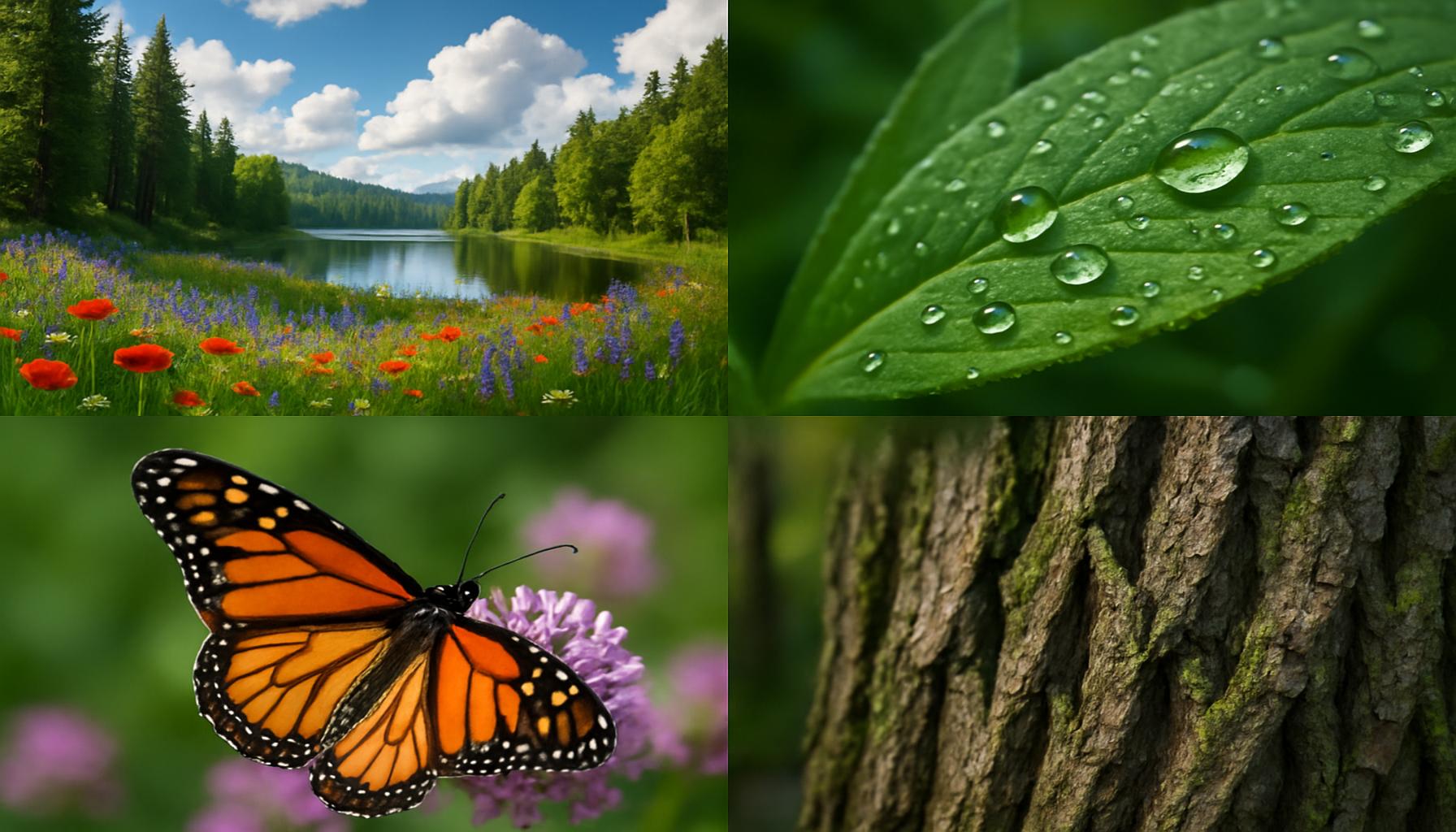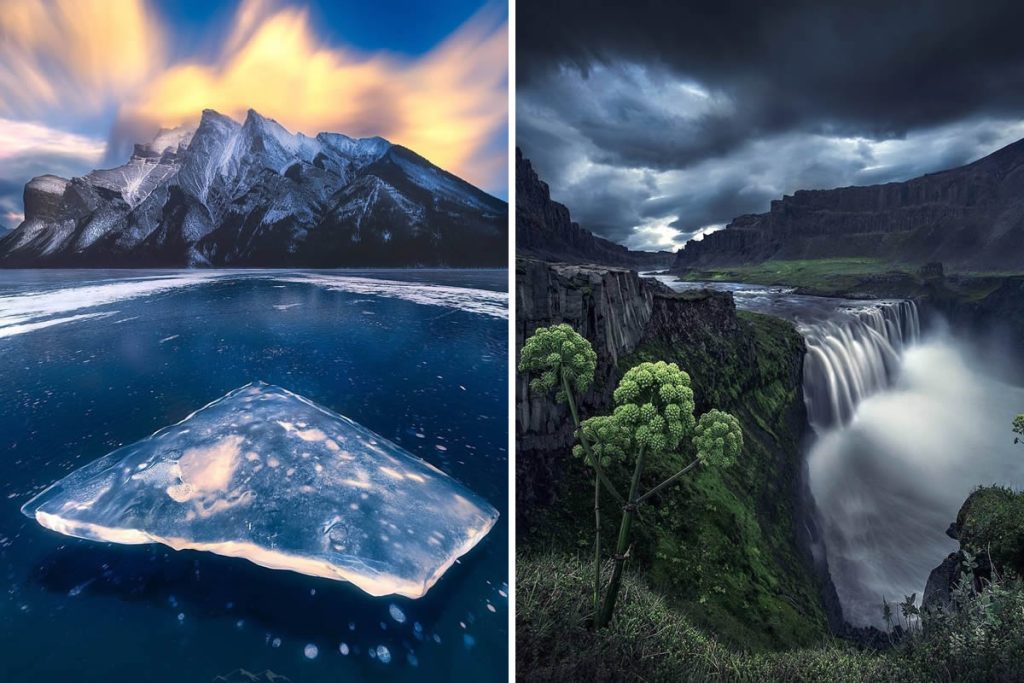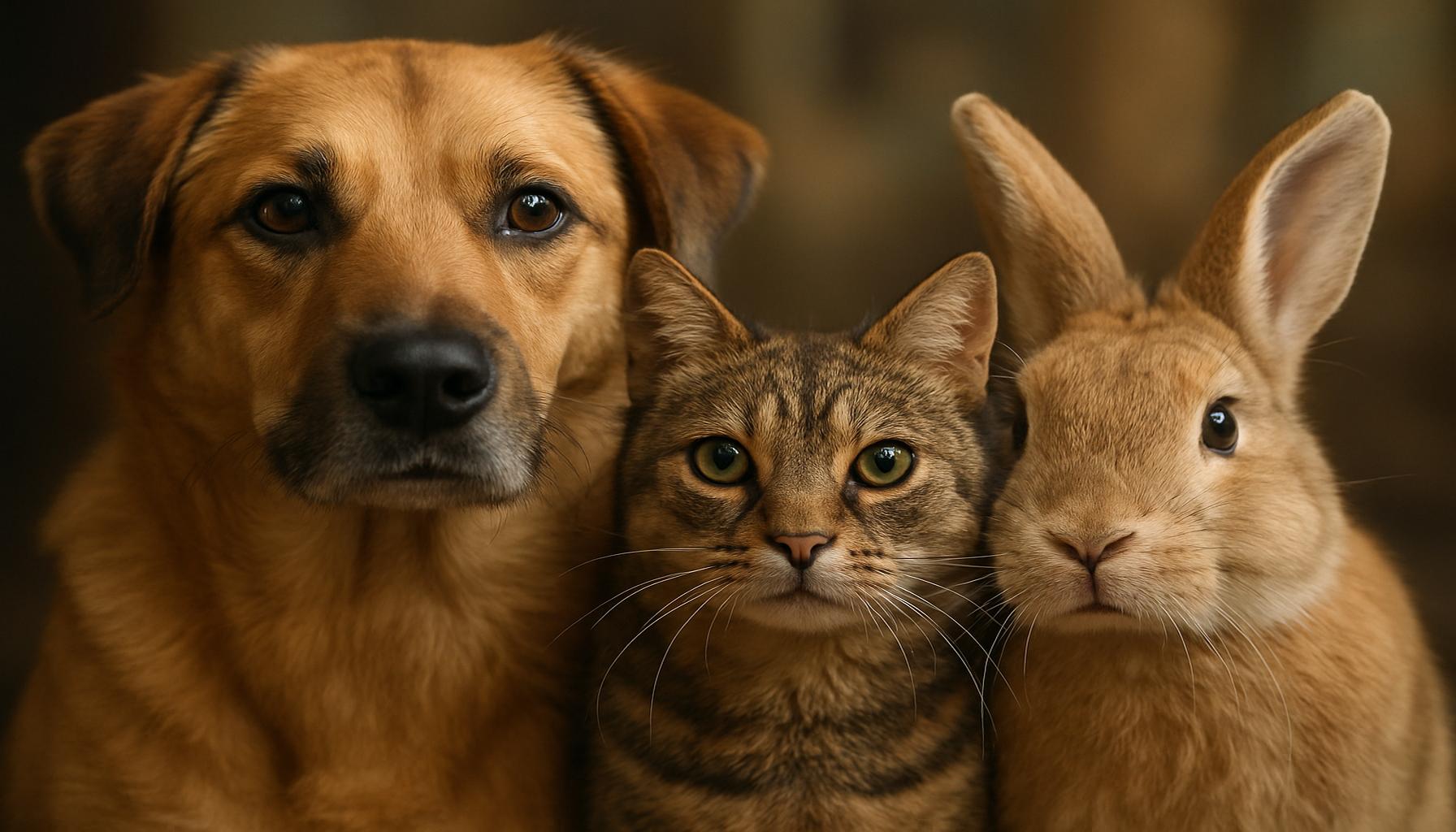Nature Photography: The Art of Preserving the Beauty of the Natural World

Capturing the Essence of the Wild
In a world increasingly dominated by technology, nature photography stands out as a powerful medium that connects us to the beauty and serenity of the natural landscape. This art form enables us to explore breathtaking environments and document fleeting moments, showcasing the planet’s diverse ecosystems. From the majestic peaks of the Rocky Mountains to the serene shores of the Pacific, each photograph tells a unique story. By capturing the intricate details of flora and fauna, photographers provide a glimpse into the harmony of nature that often goes unnoticed in our fast-paced lives.
The Role of Nature Photography
Nature photography serves multiple purposes, impacting both individuals and society as a whole. One significant role is:
- Conservation Awareness: Through striking images of endangered species such as the California condor or the Arctic fox, nature photographers can highlight the urgent need for conservation efforts. Organizations rely on powerful imagery to garner support and educate the public about fragile habitats that require protection, such as the ever-shrinking Amazon rainforest.
- Aesthetic Appreciation: Nature photography invites viewers to witness the beauty of remote areas and provides an artistic outlet that elevates visual experiences. Observing a well-captured sunrise over the Grand Canyon or the delicate bloom of a wildflower in a national park can evoke a profound sense of wonder and connection to the earth.
- Inspiration: Captivating imagery can inspire individuals to embrace adventure and spend more time outdoors. For instance, seeing stunning photographs of wildlife encounters in Yellowstone National Park may motivate viewers to plan their own trips, seeking to immerse themselves in nature’s wonders.
Techniques and Tools
To excel in nature photography, practitioners often employ a variety of techniques and tools that enhance their craft. Understanding the fundamentals is crucial:
- Camera Settings: Mastering exposure, aperture, and shutter speed is essential for capturing high-quality images. A slower shutter speed can beautifully capture flowing water in a waterfall, while a wide aperture can isolate a subject, enhancing bokeh effects against serene backgrounds.
- Composition: Utilizing the rule of thirds allows photographers to create balanced images that lead the viewer’s eye throughout the frame. This technique is particularly effective in landscapes where skies, mountain ranges, and foreground elements interact harmoniously.
- Post-Processing: Enhancing images with editing software, such as Adobe Lightroom or Photoshop, can radically improve the vibrance and clarity of photographs. Thoughtful adjustments can bring out the rich colors of autumn foliage or preserve the delicate textures of a snowy scene.
As you delve into the enchanting world of nature photography, prepare to uncover the intricate details and vibrant colors that reflect the planet’s beauty, compelling you to preserve it like never before. Embrace this enriching experience, and let each photograph transport you to the wild, prompting an appreciation for our planet that many are eager to explore.
DISCOVER: Click here to dive into the evolution of digital photography

Unveiling the Beauty of Our Planet
Nature photography is more than just a hobby; it is a profound form of artistry that showcases our planet’s stunning landscapes and intricate ecosystems. At its core, this art form aims to reveal the beauty that often lies hidden, encouraging viewers to establish a deeper connection with nature. Through the lens of a camera, photographers are not merely capturing images but are inviting us to experience the serenity of untouched wilderness, vibrant flora, and elusive wildlife. Each photograph is an opening to a world we might otherwise never witness, sparking curiosity and inspiring conservation.
The Impact of Nature Photography on Conservation
One notable aspect of nature photography is its role in raising awareness about environmental issues. The vivid depictions of wildlife and ecosystems not only amaze audiences but also serve as a call to action. The following factors exemplify how nature photography can influence public perception and drive important conservation efforts:
- Documenting Biodiversity: Photographing a variety of species, from the majestic bald eagle to the delicate monarch butterfly, helps to illustrate the rich biodiversity within specific habitats. By showcasing unique species, photographers can foster appreciation and understanding, which is essential for promoting conservation efforts.
- Highlighting Environmental Challenges: Powerful images of deforestation, melting glaciers, and polluted landscapes serve as stark reminders of the environmental challenges facing our planet. These images can inspire individuals and communities to participate in advocacy and support policies aimed at safeguarding nature.
- Cultivating Empathy: Engaging images often elicit emotional responses, creating a sense of empathy toward the natural world. When viewers see a photograph of a distressed sea turtle entangled in plastic, they may feel compelled to take action against waste and pollution in their own lives.
The Journey of the Nature Photographer
Becoming a proficient nature photographer involves a journey of discovery and learning. It requires a blend of artistic vision, technical skill, and a profound respect for nature. Here are some critical steps aspiring photographers often undertake:
- Education and Research: Understanding the behavior of wildlife, knowing the best times to capture specific shots, and studying ecosystems can significantly improve the quality of photographs and support ethical wildlife photography practices.
- Field Experience: Spending time in the great outdoors—whether it’s hiking through national parks like the Grand Canyon or exploring lesser-known wilderness areas—provides essential opportunities for capturing those elusive moments in nature.
- Networking and Collaboration: Engaging with fellow photographers, joining nature photography groups, and participating in workshops can enhance skills and provide valuable insights. Collaborating with conservation organizations can also elevate the impact of an individual’s work.
As we delve into the art of nature photography, we discover that it is not only about capturing beautiful images but also about preserving the essence of the natural world. The ability of a photograph to transcend time and space creates a narrative that resonates within us, prompting a collective responsibility to nurture and safeguard our planet for future generations.
| Category 1 | Category 2 |
|---|---|
| Visual Storytelling | Nature photographers convey powerful narratives of the environment through their imagery, drawing attention to important ecological issues. |
| Conservation Advocacy | By showcasing the beauty of wildlife and natural settings, photographers promote awareness and inspire action towards the conservation of threatened species and habitats. |
In the realm of nature photography, each captivating image serves as a portal into the intricate beauty of our planet. Through the lens, photographers not only capture moments but also tell profound stories that resonate with viewers and prompt them to reflect on their connection to nature. The art form goes beyond aesthetics; it becomes a crucial medium for raising awareness about pressing environmental issues.Natural environments, ranging from lush forests to arid deserts, are rich in biodiversity, and every photograph highlights the delicate balance necessary for these ecosystems to thrive. By engaging with the compelling narratives behind each photograph, audiences are more likely to appreciate the need for conservation efforts. This connection fosters a deeper understanding of the role individuals can play in preserving the natural wonders depicted in these striking visuals.Each photograph can act as a catalyst for change, urging viewers to contribute to initiatives that protect vulnerable species and restore ecosystems. In an age where climate change poses significant threats to biodiversity, the role of nature photography becomes even more pivotal, bridging the gap between art and activism.
DIVE DEEPER: Click here to discover the evolution of digital photography
Technological Advances and the Future of Nature Photography
The evolution of technology has fundamentally transformed nature photography, allowing photographers to capture the beauty of the natural world in ways previously unimaginable. From the advent of digital cameras to the rise of drone technology, these advancements have not only enhanced the artist’s ability to shoot impressive images but have also increased accessibility to this art form. Here are some key developments that have shaped the landscape of nature photography:
Digital Cameras and Mirrorless Systems
The shift from film to digital photography has democratized nature photography, making it more accessible to budding photographers. Digital cameras allow for instant feedback and limitless shooting opportunities without the constraints of film. Among these, mirrorless systems have gained immense popularity due to their compact size, lighter weight, and silent operation—crucial for capturing wildlife without disturbing their natural behaviors. Upgrading to high-resolution sensors ensures that intricate details, from the delicate patterns on butterfly wings to the textures of rugged tree bark, are vividly captured.
Drone Photography: A New Perspective
Drones have revolutionized how nature photographers view and document landscapes. Offering an aerial perspective, drones can capture sweeping shots of vast forests, lakes, and mountains that convey the scale and grandeur of natural features. This bird’s-eye view not only enhances the visual appeal of photographs but also enables photographers to access hard-to-reach areas, uncovering previously hidden beauty and details. Furthermore, drone technology contributes significantly to conservation efforts by monitoring wildlife habitats, tracking changes in ecosystems, and assessing the impact of climate change from above.
Smartphone Technology: Capturing the World in Your Pocket
With the rapid advancement of smartphone technology, many people now carry powerful cameras in their pockets, expanding the reach of nature photography. Today’s smartphones are equipped with sophisticated camera capabilities, including high-resolution sensors, advanced image stabilization, and AI-powered features that assist in capturing stunning images in various lighting conditions. This accessibility encourages a new generation of photographers to explore the outdoors and develop an appreciation for nature without needing extensive equipment. Platforms such as Instagram further amplify the reach of these images, fostering a global community passionate about nature conservation.
The Role of Social Media in Nature Photography
As nature photography sees a surge in popularity, social media platforms like Instagram and Pinterest serve as pivotal spaces for photographers to showcase their work and engage with audiences. Through compelling visuals and captions, photographers share their unique narratives, which can promote environmental stewardship and instill an understanding of global ecological issues. Hashtags like #NaturePhotography, #WildlifeConservation, and #EcoFriendly serve as rallying points for individuals interested in preserving the environment. They create a shared culture that values nature and fosters dialogue about essential conservation efforts.
In this interconnected digital landscape, nature photographers have the power to sway public opinion and promote policies that support sustainability. By continuing to blend artistry with ethical responsibility, these photographers play a critical role in telling the story of our planet, encouraging people across the globe to participate in preserving the remarkable beauty of the natural world.
DIVE DEEPER: Click here to discover beginner techniques and materials
Conclusion
In an age defined by rapid technological advancement, nature photography emerges not only as an art form but also as a vital medium for conservation and storytelling. This discipline enables photographers to immortalize the breathtaking beauty of the natural world, driving home the urgency of environmental preservation while celebrating the unique and fragile ecosystems that inhabit our planet. With innovations such as digital cameras, drones, and smartphones, the barriers to capturing nature’s wonders have diminished, encouraging a burgeoning community of amateur and professional photographers alike.
As social media platforms proliferate, nature photography becomes increasingly influential in shaping public perceptions and dialogues surrounding environmental issues. Photographers wield their ability to capture stunning visuals that resonate globally, fostering empathy and inspiring collective action towards sustainability. Each image shared contributes to a larger narrative, one that emphasizes the interconnectedness of nature and humanity and the importance of protecting our natural heritage.
The future of nature photography holds exciting possibilities, but it also carries fundamental responsibilities. Photographers must strive to balance artistic expression with ethical considerations, ensuring that their work does not exploit but rather uplifts the environments they capture. By embracing this dual commitment, nature photographers can inspire awe, encourage appreciation, and ultimately instill a sense of stewardship in all of us. As we witness the evolution of this captivating art form, let us move forward with a shared mission—preserving the beauty of the natural world for generations to come.



